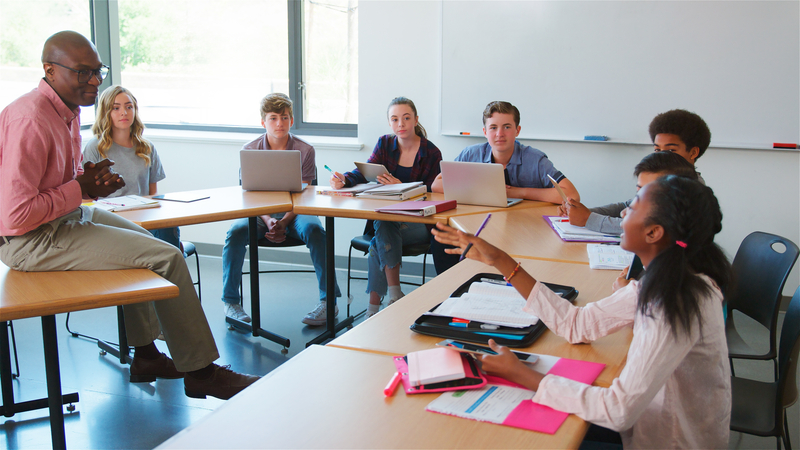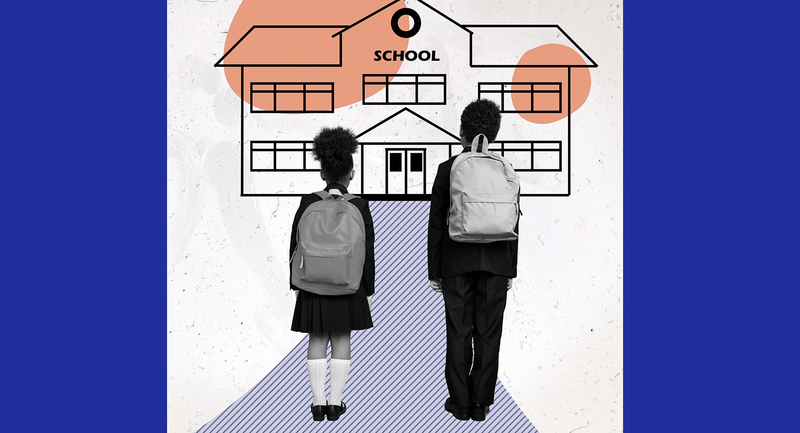As schools prepare for the start of the academic year amid the COVID-19 crisis, there is a lot of uncertainty what school will actually look like. Will students be required to attend class in person? Will schools pivot to all distance learning? Will there be a hybrid model, with some students in class and others online? This uncertainty is particularly challenging for teachers who are trying to plan lessons because the varied learning models can require very different kinds of instruction. In fact, many educators are currently making multiple sets of plans in order to accommodate all the possibilities.
But what if, in places where safety conditions allow, teachers could have one approach that maintains the classroom environment and is adaptable to contingencies so that they have to plan only once and could pivot in a moment's notice to fully online, fully in-person, or hybrid instruction?
The approach I refer to is dynamic hybrid learning, a distance-learning model I designed at Mount Holyoke College in Massachusetts in 2013. This model blends online and in-person students for live, interactive learning. Unlike typical distance-learning models, this one seeks to fully integrate the online students in order to make them feel like they are sitting right in class with their peers. The dynamic aspect comes from using multiple cameras, or one camera that can capture multiple areas in the classroom. This makes the experience of online learning much more engaging because students can follow the flow of the lesson in a more natural way.
In addition, since they are working with both online and in-person students, teachers need only one set of lesson plans (aside from minor accommodations). If the rate of COVID-19 infection gets worse in a school community and classes have to be moved fully online, the materials are already designed for online students. If, on the other hand, treatment options improve or cases drop off significantly and students can fully return to class, the materials are ready to go for in-school learning.
Obviously, school leaders need to make decisions about what learning model their school will use this year based on the specific circumstances in their locality, in concert with government and medical guidelines. But in situations that allow for a limited number of students to be present in school (including on a rotating schedule), the dynamic hybrid model can be a cost-effective and practical model.
Let's take a look at how to make it work.
The Technology Basics
When I first started experimenting with this model, we had a very low-tech setup using a laptop to connect to Zoom, a cheap external webcam that you could control with a remote to point to different parts of the classroom, a projector and screen to display the Zoom participants, and a conference speaker/mic system. This setup connected participants in my program who were on campus with participants from Mozambique, Kenya, the Netherlands, Seattle, Chicago, and Orlando.
The program has since grown to include more advanced technology in order to make it a smoother experience, but at its core, dynamic hybrid learning doesn't have to break the bank. You just need a way to connect the online students to the class so that everyone can see, hear, and interact with one another. Having a camera that can be preset in certain positions makes this easier because the teacher can change the view for online students at the push of a button.
The Classroom Design
This work begins by setting up the classroom space so that the key areas are visible to both the online and in-person students. These areas include the spots where the teacher will stand during the lessons, any writing surfaces (easel or whiteboard, for example), the screen for presentation slides, and any other special areas relevant for specific teachers and subjects. It's also helpful to be cognizant of where the online students will be displayed because the cameral needs to be positioned in such a way that when individuals in classroom look at students on the screen, it looks like they are making eye contact. (See Figure 1 for an example of a dynamic hybrid learning classroom setup.)
Desk arrangements in the classroom can be made following the recommended guidelines for social distancing. The floors can be marked off with blue painter's tape to help the teacher know where to stand to be in view of the camera(s). The tape can also be used to help students know how to navigate the classroom. This creates a space that is conducive for the social nature of learning while maintaining safe distances between students and the teachers. It also makes the classroom experience more accessible for students who attend class online.
The Planning and Preparation
Good online teaching methods begin with just good teaching methods. Most of the time, what works in face-to-face settings will work in online and hybrid settings too. Therefore, teachers should plan lessons the way they normally would for face-to-face learning.
Next, they should consider which aspects of the lesson need some adaptation for the online environment. This might include using virtual manipulatives for online students, or planning to send home specialized materials for the students attending virtually. In addition, teachers can create documents and interactive slides using platforms like Google Apps so that they are accessible to all students while giving them the option to print physical copies for students coming to class.
For example, a 7th grade math teacher preparing a lesson on adding and subtracting negative numbers may want to use two-color counters for students to make visual representations in order to better understand the concept. Students in class will have access to the physical counters for their work, while the teacher could give online students access to a virtual version of the same tool. The teacher could also create a Google Slide deck of the task where students can collaborate with one another while in small groups.
Some initial training might be needed for teachers who are unsure of how to create interactive lessons like this or how to facilitate these kinds of learning activities. But the steps are relatively straightforward once you get the hang of it, and many teachers likely have become more accustomed to this kind of teaching as a result of a prolonged switch to remote learning this spring.
The Facilitation
Effective facilitation is the key aspect of dynamic hybrid learning. Teachers should run the class as they normally would while actively engaging their students streaming in via Zoom. This involves bridging the divide between both groups of students by explicitly inviting participation and conversation from each. I equate this to hosting a dinner party where you invited two different friend groups who don't know each other. You need to work extra hard in the beginning in order to make everyone comfortable in the space and with one another, but the awkwardness goes away pretty quickly as the class community forms.
There are additional subtle moves teachers can make in order to draw the online students in. One example is to make "eye contact" with the students on Zoom while you're talking by looking toward the camera while you're addressing the whole class. That subtle nod goes a long way in making online students feel a part of the class. We see this happen on TV shows like "The Office" when Jim looks knowingly at the camera and lets you in on the joke. You feel as if you're right there with him. This technique works in dynamic hybrid learning as well.
By designing highly interactive lessons and implementing best practices through dynamic hybrid learning, teachers can ensure that their distance learning methods engage both online and in-person students. In addition, having teachers in their classrooms (where safety considerations permit) puts them in their element with access to the tools and resources they need. Essentially, this is online learning that doesn't feel like online learning.
Recreating the Classroom Experience
This school year is going to be filled with uncertainties and challenges. But using a dynamic hybrid learning model like the one I've described can create both familiarity and flexibility. It is especially well-suited to schools that are interested in accommodating rotations of limited numbers of on-site students. Most important, this model allows for teachers (where conditions permit) to be in their classrooms teaching all their students, whether online or in-person, which provides a more natural learning experience.
In the end, we all want an adaptable plan that makes it easy to make the safety of students and school personnel a top priority. The hesitation about moving to all online learning has to do with the concern that it is not a viable form of long-term instruction. This does not have to be the case. With the right training and support, I believe teachers who are able be in schools where proper safety precautions are taken can work within the dynamic hybrid learning model to build lessons that recreate the classroom experience while providing the flexibility needed during these uncertain times.







